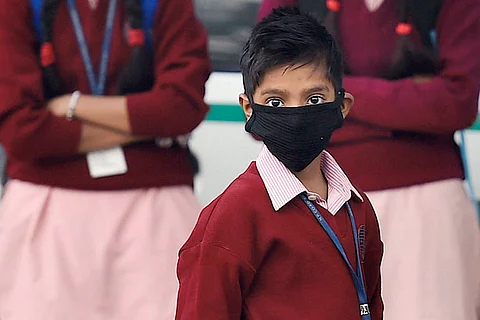

The presence of particulate matter in the air at various locations in Bengaluru is much higher than the recommended standards, an independent study has found. This particularly toxic air has been found in areas that see heavy traffic.
Researcher Aishwarya Sudhir, who spoke at the launch of the study ‘Bengaluru's Rising Air Quality Crisis: The Need for Sustained Reportage and Action’, said that breathable pollution levels is in comparison to the ambient data generated by the Karnataka State Pollution Control Board (KSPCB).
The study was conducted using low-cost monitors from Co-Media Lab and Climate Trends for a period of seven days to measure personalised exposure levels.
Officials with the KSPCB, however, refuted the study saying the figures could not be considered for assessment as low-cost monitors were used and the means used to generate data did not meet the necessary norms.
The national ambient air quality standard sets a limit of 60 micrograms (μg) per cubic metre (m3) for PM 2.5 (the smallest particulate matter which penetrates easily into the lungs and the blood stream) and 100 μg/m3 PM10.
According to an IANS report, between 8.30 am and 10.30 am, the particulate pollution levels between Banashankari to Marathahalli varied from 70-800 micrograms per cubic meter, an alarming high number.
The study was conducted between February 5 and 15. To gather data, the monitor was installed in an auto armed with a GPS tracker to locate various junctions and sensitive areas in which pollution spikes have taken place.
The exercise covered 7 arterial roads during peaks-hour traffic, both in the morning and evening to understand the impact of traffic on pollution levels.
The arterial routes had a common starting point – Jayanagar/Banashakari touching Marathahalli, Silk Board, Electronic City, Whitefield, Uttarahalli, MG Road and Mekhari Circle.
The study quotes an auto driver, Sreedhar Gowda, as saying, “It’s extremely hard to sit inside an auto during the peak hours, the BMTC buses, the two-stroke autos and diesel smoke all makes it unbearable. I had to wear my mask on all days and the slow moving traffic would just cover me in smoke and make my eyes water.”
Dr Rahul Patil, cardiologist at Jayadeva Hospital, said that there is a high incidence of heart attacks among the auto and cab drivers in the city as they spend long hours in slow-moving traffic. He said that the hospital is collaborating data from patients from a younger age group to assess how air pollution was one of the factors responsible for cardiovascular diseases.
Co-Media Lab Director, Pinky Chandran, told IANS that unlike New Delhi and other cities, Bengaluru fortunately has many citizen action groups that are championing the cause of clean air.
"The state needs to take its citizens into confidence and formulate an implementable action plan which is based on air quality data so that it can bring about change," she said.